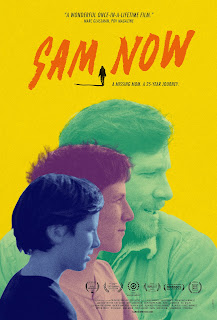SAM NOW ***
IDEA: A decades-spanning portrait of Sam Harkness, who embarked on a road trip with his half-brother to find the mother who abruptly left him when he was a teen.
BLURB: There’s a whole category of documentaries that self-consciously turn the filmmaking process into a kind of therapy, either for the maker or the subject(s) in front of the camera. Many of these, such as Stories We Tell, Minding the Gap, or Dick Johnson is Dead, turn to family matters, using archival footage and staged scenarios to process deeply rooted traumas that would otherwise be difficult to confront. Reed Harkness’s Sam Now both fits and complicates this idiom. On the most explicit level, the film is an attempt by Harkness to give closure to his half-brother Sam, to help him heal from the wounds left from being abandoned by his mother, Jois, when he was 14. To do this, he continues a lifelong project of filming his brother - usually in playful 8 mm home movies - as a documented West Coast road trip in search of the absent mother. During the trip, Reed has Sam adopt an alter ego named the Blue Panther, in effect creating a fiction through which to stage a fantasy of reconciliation. But the brothers don’t need to create a fantasy, as fairly early into their journey they find the person they’ve been looking for. Most of Sam Now unfolds after the reunion, a putative catharsis that never quite comes. The film is wise about facing the reality that the people Sam, his mother, and his other family members used to be are no longer who they are now, and maybe weren’t even who they thought they were then. Harkness quickly realizes that “healing” may not even be possible, and that the best anyone can do is understand the social factors, often originating before our lifetimes, that influence the choices we make. Although Reed’s own perspective on his mother is under-explored - perhaps his filmmaking practice, and his focus on his brother, is his way of sublimating his feelings - Sam Now is impressively lucid and empathic in detailing the cycles of intergenerational trauma.

